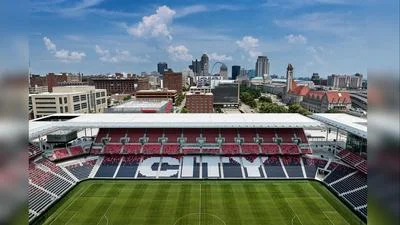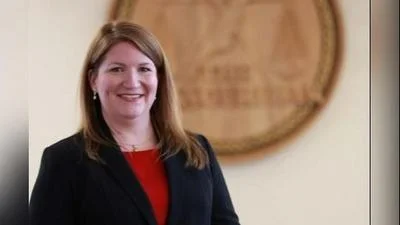Cori Bush | Wikimedia Commons
Cori Bush | Wikimedia Commons
Washington D.C. — On May 5, 2023, Congresswoman Cori Bush (MO-01) proudly announced $196.3 million in transit funding for Bi-State Development from the U.S. Department of Transportation’s Federal Transit Administration (FTA). This funding will replace 48 light rail vehicles that have exceeded or are near the end of their useful life in order to improve service and reliability of St. Louis’s regional transportation system. Furthermore, this funding will help create more manufacturing jobs and bolster the region’s economy. This comes as a part of the Biden-Harris Administration’s announcement of more than $700 million in grants to replace aging passenger railcars across six transit systems in the country.
“Community members across our St. Louis region rely on our light rail transportation systems to get to work, school, and to see family and loved ones. I am proud to announce the over $196 million investment into modernizing and improving our transportation infrastructure to ensure it is reliable, safe and efficient,” said Congresswoman Bush. “St. Louis and I are thankful to the Biden Administration for their partnership in securing this funding, as well as to Bi-State Development for their dedication to continuous improvement in service of our region. This funding not only brings us closer to our goal of having public transportation systems that are more accessible, economical and environmentally friendly, but it also will strengthen our economy and create more manufacturing job opportunities.”
“The regional economy is driven by public transit access to jobs, health care, and entertainment. We rely on our federal legislative delegation to provide the capital to help keep our region moving. Congresswoman Bush has been a staunch supporter of transit from Day One! This critical capital funding award that our delegation helped us secure means our transit system will continue to move forward with clean, state of the art modern trains,” said Taulby Roach, Bi-State Development President & CEO.
“Strengthening public transit helps bring our region together, connecting working families to good jobs, health care, and better opportunities,” said St. Louis Mayor Tishaura O. Jones. “I applaud Congresswoman Bush's work advocating for St. Louisans in our nation's capitol.”
“Investing in public transportation is investing in our workforce, our neighborhoods, and our region,” said County Executive Dr. Sam Page. “I appreciate Congresswoman Bush’s consistent efforts to help secure vital funds for St. Louis County.”
Older railcars contribute to service delays and increased costs and lack newer amenities, such as digital signage and audio tools that improve the riding experience. They may also lack accessibility features – such as direct access into the railcar – for people with disabilities or anyone pushing a stroller.
This funding marks the latest win in Congresswoman Bush’s continuous push to improve and invest in public transportation infrastructure in the St. Louis region.
In December 2022, Congresswoman Bush worked with then-Senator Roy Blunt to deliver $214,000,000 in investments for public transportation systems nationwide, including for Bi-State Development in St. Louis, to aid recovery needs following natural disasters. This funding came via the passage of the Consolidated Appropriations Act 2023, or Omnibus Package, which is legislation that fund the federal government for fiscal year 2023.
In December 2022, Congresswoman Bush introduced pieces of legislation that would fund transformative grant programs designed to elevate US transit infrastructure, including the Light Rail Transit Act which would create a light rail grant program to provide grants to public entities to design and implement light rail projects.
This March 2023, Congresswoman Bush secured $82,259,000 in disaster recovery for the St. Louis region through Community Development Block Grant Disaster Recovery (CDBG-DR) grant funds, which would rebuild disaster-impacted areas and provide crucial seed money to start the long-term recovery process.
Original source can be found here.






 Alerts Sign-up
Alerts Sign-up